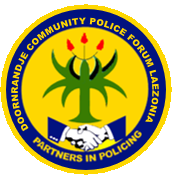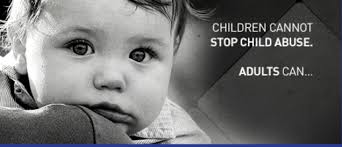
How to report child abuse in South Africa
Right, so what’s the next step in reporting child abuse? Well, you should identify an institution that can investigate the issue further. This can be a child protection service, the police or a provincial Department of Social Development. From there, the institution will investigate the matter further and, if necessary, take the measures needed to ensure the safety of the child is prioritised. In all cases, the Department will take on the matter and determine whether or not legal action is necessary.
For more guidance on reporting child abuse, feel free to contact:
South African Police Services (SAPS)
Emergency line: 10111
Child abuse reports: childprotect@saps.gov.za
LifeLine South Africa
Tel: 0861 322 322
Website: www.lifelinesa.co.za
The Child Emergency Line
Toll-free: 0800 123 321
Women and Men Against Child Abuse
Tel: 011 789 8815
Website: www.wmaca.org
Childline South Africa
Toll-free: 08000 55 555
Tel: 031 201 2059
E-mail: admin@childlinesa.org.za
Website: www.childlinesa.org.za
Child Welfare South Africa
Tel: 074 080 8315
E-mail: info@childwelfaresa.org.za
Website: www.childwelfaresa.org.za
You can also donate to charities that help abused children in South Africa. Simply visit www.charitySA.org.za for a comprehensive list of places you can contribute to.
The 5 main types of child abuse in South Africa
#1 Emotional abuse
This kind of maltreatment can take many forms. It usually involves the deliberate and consistent belittling, humiliation or ridiculing of a child by a parent or caretaker. Of course, while there is no physical harm done to the child, their development can be severely impacted. Low self-esteem, depression and anxiety are just some of the effects.
#2 Emotional neglect
On a similar note, emotional neglect is also a form of abuse. This speaks to the failures of parents or caretakers when it comes to providing affection, attention and support.
#3 Physical neglect
Emotional neglect shouldn’t be confused with physical neglect, however. The latter refers specifically to the failure of parents or caretakers to provide children with basic needs, such as clothing, food, shelter and medical care. Other forms of physical neglect include child abandonment, kicking children out of their homes and not enrolling them into school. Although, in this regard, we mustn’t be too quick to point fingers of blame as socio-economic factors, especially in South Africa, can sometimes leave parents no choice in some matters.
#4 Physical abuse
Any bodily harm inflicted on a child, such as bruises, cuts, burns, etc., by a parent, caretaker or stranger is considered physical abuse. However, as SaferSpaces points out, there is often some kind of “social ambivalence” around this issue because “most cultures and societies use some form of physical abuse, usually milder forms such as spanking, as a means of punishing and disciplining children, and have done so for centuries. This makes it difficult to distinguish what behaviour is truly abusive, and infringes on a child’s “health, survival, development or dignity”.
#5 Sexual abuse
When it comes to sexual abuse, it can entail any form of sexual assault or exploitation of children by parents, caretakers or strangers. This includes sexually inappropriate and criminal behaviour, such as rape, incest, fondling and exploitation.
What are the common signs of child abuse? Some red flags to look out for.
Because most children experience various forms of abuse behind closed doors, it can be difficult for anyone to know any kind of maltreatment or neglect. This is why it’s essential to be observant and not ignore the common signs of child abuse. You could potentially save a life or prevent a child from growing up and dealing with a variety of developmental issues. A child may be neglected or mistreated if:
- they seem too anxious and withdrawn
- they exhibit sudden changes in behaviour or personality and lack concentration
- they tend to become aggressive suddenly
- they don’t seem to have any friends and don’t possess necessary social skills
- they know about adult issues that are not age-appropriate
- they are covered in bruises or appear to be in some form of pain
- they are continually absent from school or start to perform poorly in their studies
Please note: this is not an exhaustive list, as various types of abuse can manifest in many different ways. For more info, check out this presentation on Children, Domestic Violence and Addictions.
Educational Booklet for Children
dsd-Childrens_Act_Explained_Booklet3_June2009Views: 27

